Anatomy and function of the limbic system
1/43
There's no tags or description
Looks like no tags are added yet.
Name | Mastery | Learn | Test | Matching | Spaced |
|---|
No study sessions yet.
44 Terms
Connecting pathways of the limbic system (5)
•Alveus
•Fimbria
•Fornix
•Mammillothalamic tract
•Stria terminalis
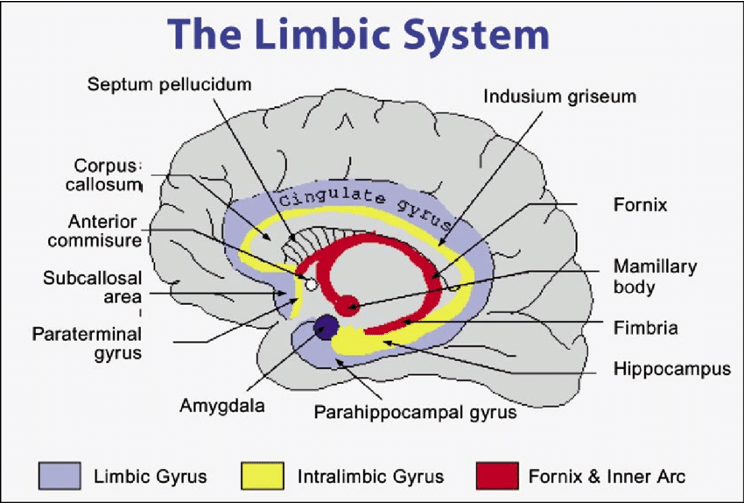
Functions of the limbic system
expression of behaviour and emotion
role in feeling, feeding, fighting, fleeing and mating
memory consolidation
expresses itself through hypothalamus via the ANS
Structural components of the limbic system - on surface of brain (4)
parahippocampal gyrus
olfactory bulb
olfactory tract
olfactory cortex
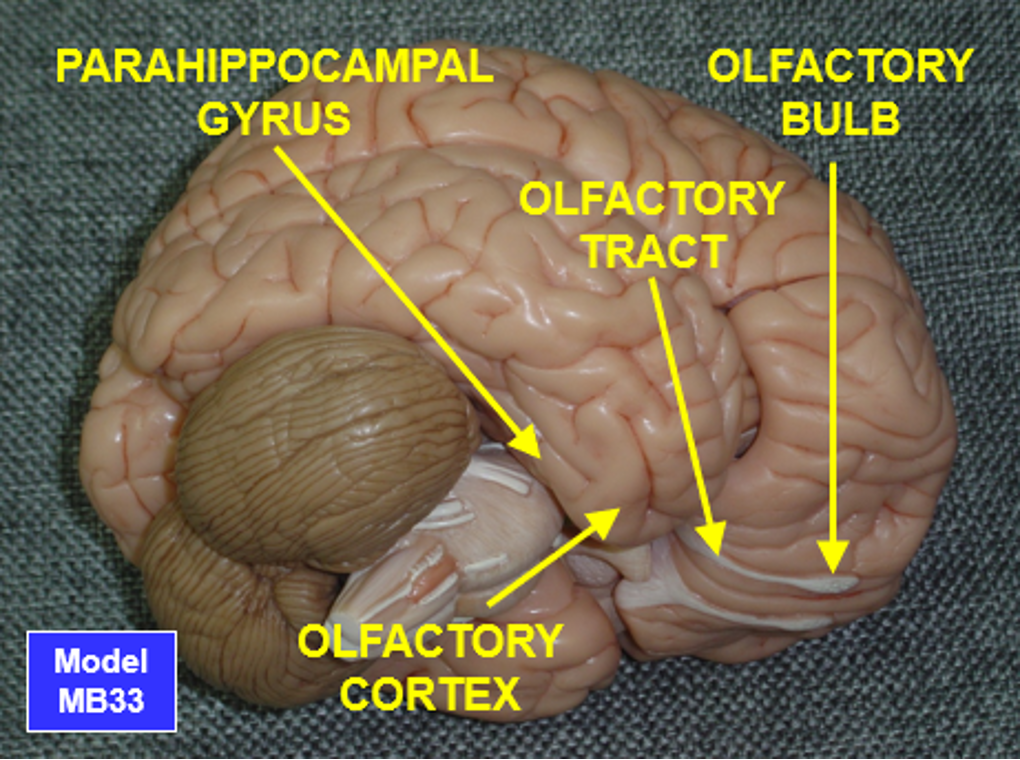
Structural components of the brain - midbrain
midline of body of fornix divides into 2 tracts of fibres (columns of fornix
each tract passes into the substance of a cerebral hemisphere to end on a maxillary body in the hypothalamus
fibres from there pass to the anterior nucleus of the thalamus
thalamus sends fibres to the cingulate gyrus (in direct continuity with the parahippocampal gyrus)
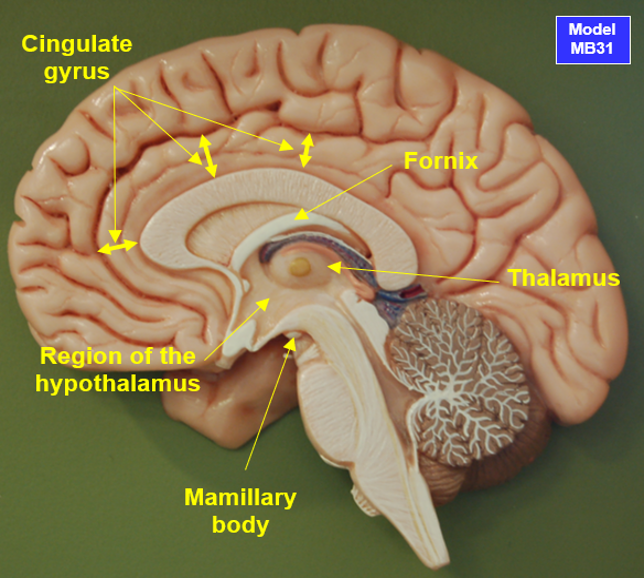
What are the key regions involved in the limbic system, and how are they interconnected?
Prefrontal Cortex: Connects to the mammillary body, hypothalamus, and septal area.
Anterior Thalamic Nuclei: Linked to the cingulate gyrus and mammillary body.
Cingulate Gyrus: Interacts with the parahippocampal gyrus and other structures.
Parahippocampal Gyrus: Connects to the hippocampus and cingulate gyrus.
Hippocampus: Linked to the amygdala, fornix, and parahippocampal gyrus.
Amygdala: Communicates with the hypothalamus, septal area, and insula.
Fornix: Serves as a pathway connecting the hippocampus to the mammillary body and septal area.
Hypothalamus: Interacts with the septal area, amygdala, and prefrontal cortex.
Olfactory Cortex: Sends signals to the amygdala and insula.
Insula: Receives input from the amygdala and connects to the parahippocampal gyrus.
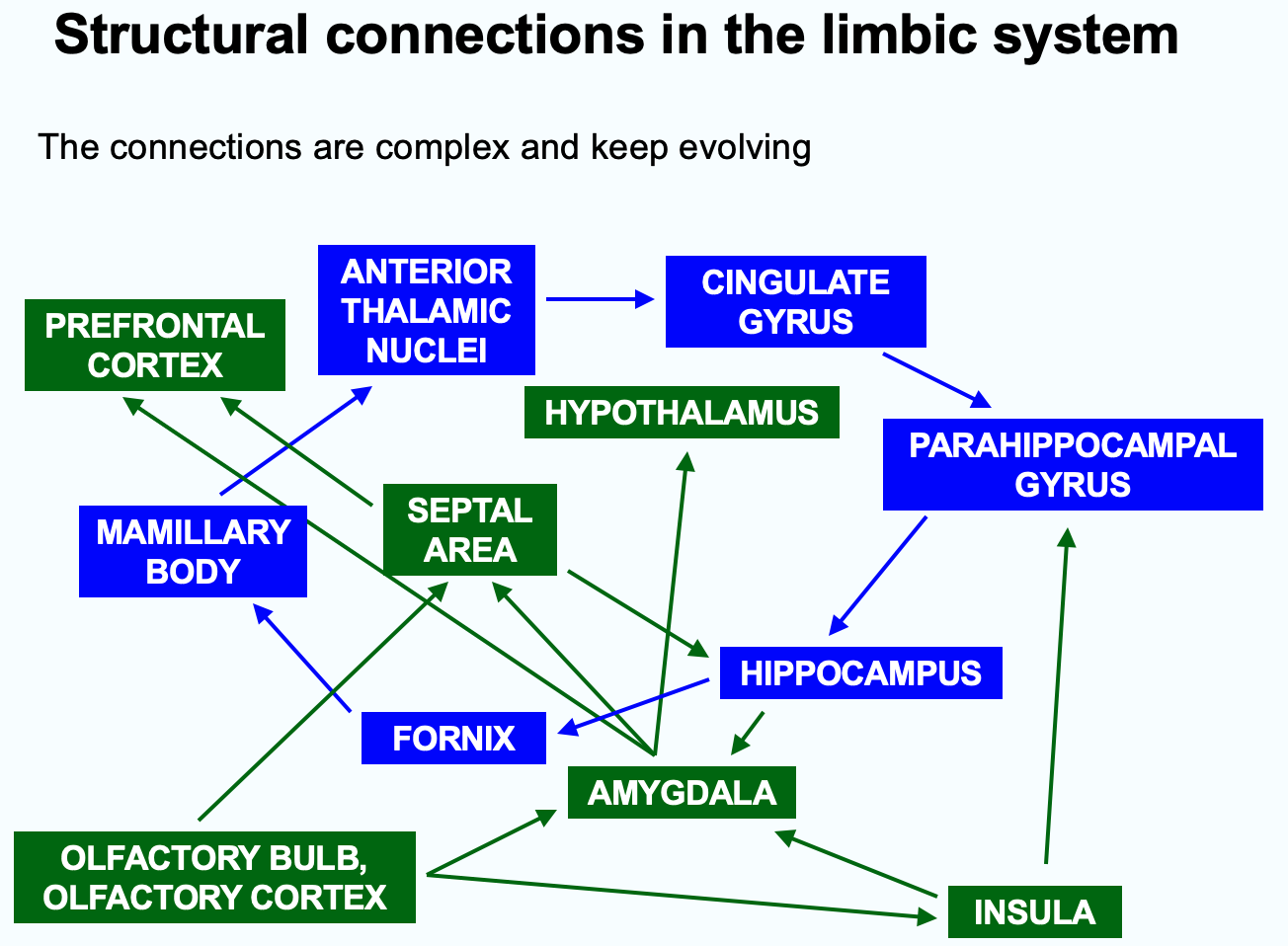
Where is the hippocampus located and what is its function?
lies in the floor of the lateral ventricle, near the parahippocampal gyrus on the inferior surface of the temporal lobe of the brain
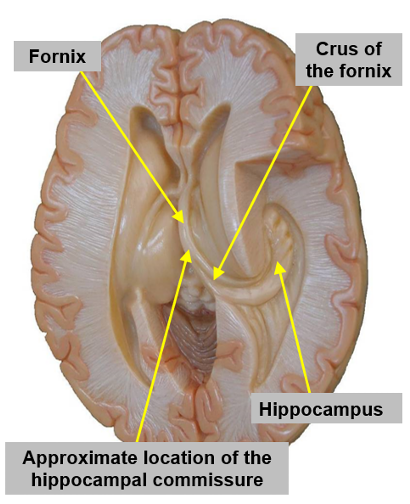
Function of the parahippocampal gyrus
sends afferent fibres to hippocampus
What are the efferent fibers of the hippocampus, and how do they connect to the fornix?
Efferent fibers arch upwards and form the crus of the fornix, which passes beneath the corpus callosum.
What happens at the hippocampal commissure?
Some fibers (efferent) are exchanged across the midline between the two crura
How is the body of the fornix formed?
The two crura meet in the midline and converge
Functions of the hippocampal formation
Learning, memory and recognition of novelty
What type of cells are found in the hippocampus, and where do they project?
pyramidal cells that project via the fornix to the septal area and the hypothalamus.
Structure of the hippocampus
3 layered archicortex
Into how many cytoarchitectural areas is the hippocampus divided?
four cytoarchitectural areas: CA1–CA4.
What are the functional consequences of lesions in the hippocampal formation?
memory defects and are associated with Alzheimer's disease.
What happens with bilateral damage to the hippocampus?
prevents the formation of new memories, severely impacting brain function.
What are the key connections of the hippocampal formation?
Entorhinal cortex via the perforant pathway.
Cingulate gyrus via the cingulum.
Anterior nucleus of the thalamus via the anterior limb of the internal capsule.
Mammillary body via the mammillothalamic tract.
Septal area via the fornix.
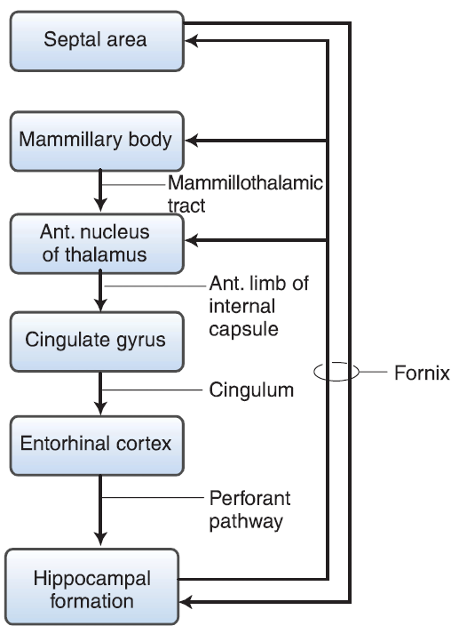
What are the layers of the hippocampus proper?
Molecular layer
Pyramidal layer
Polymorphic layer
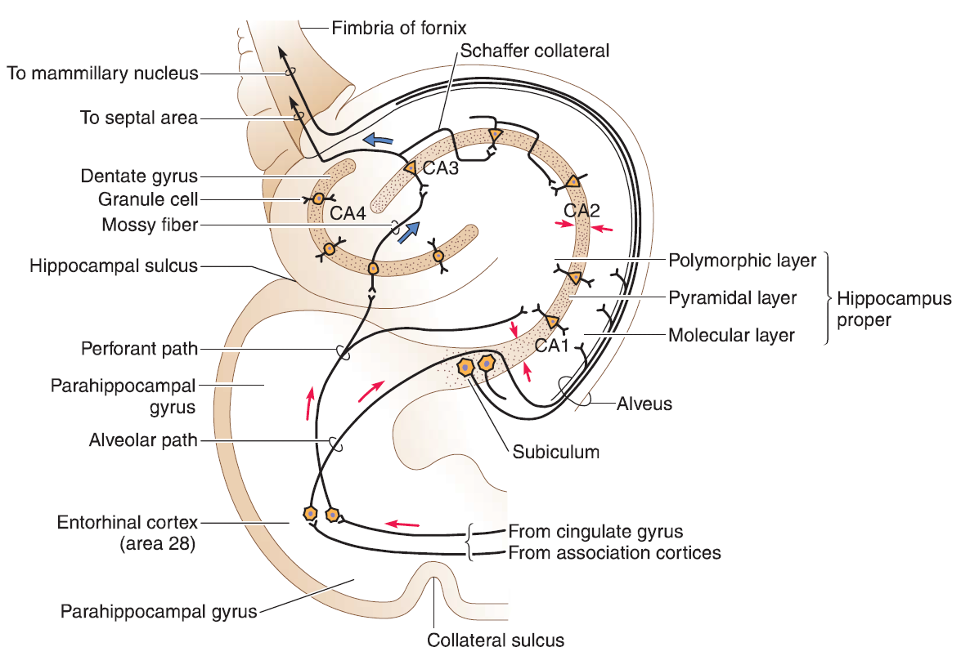
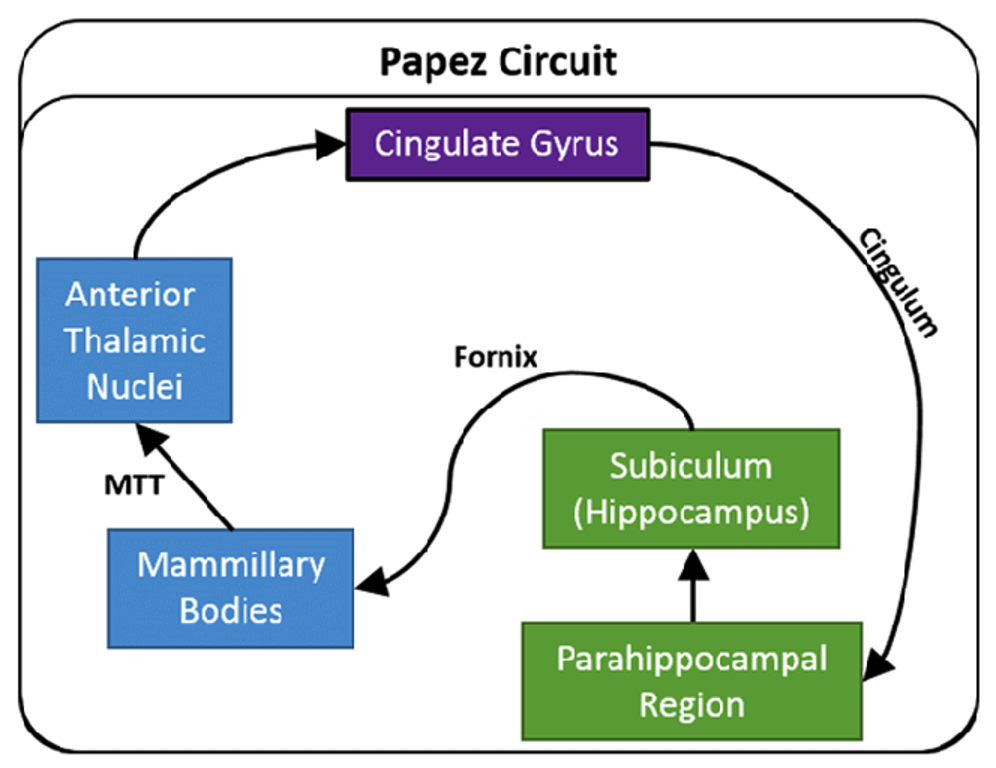
Circuit of Papez
Starts in the hippocampus: Signals travel through the fornix to the mammillary bodies.
Mammillary bodies: Send signals via the mammillothalamic tract to the anterior thalamic nucleus.
Anterior thalamic nucleus: Relays signals to the cingulate gyrus.
Cingulate gyrus: Sends information to the entorhinal cortex and back to the hippocampus via the parahippocampal gyrus.
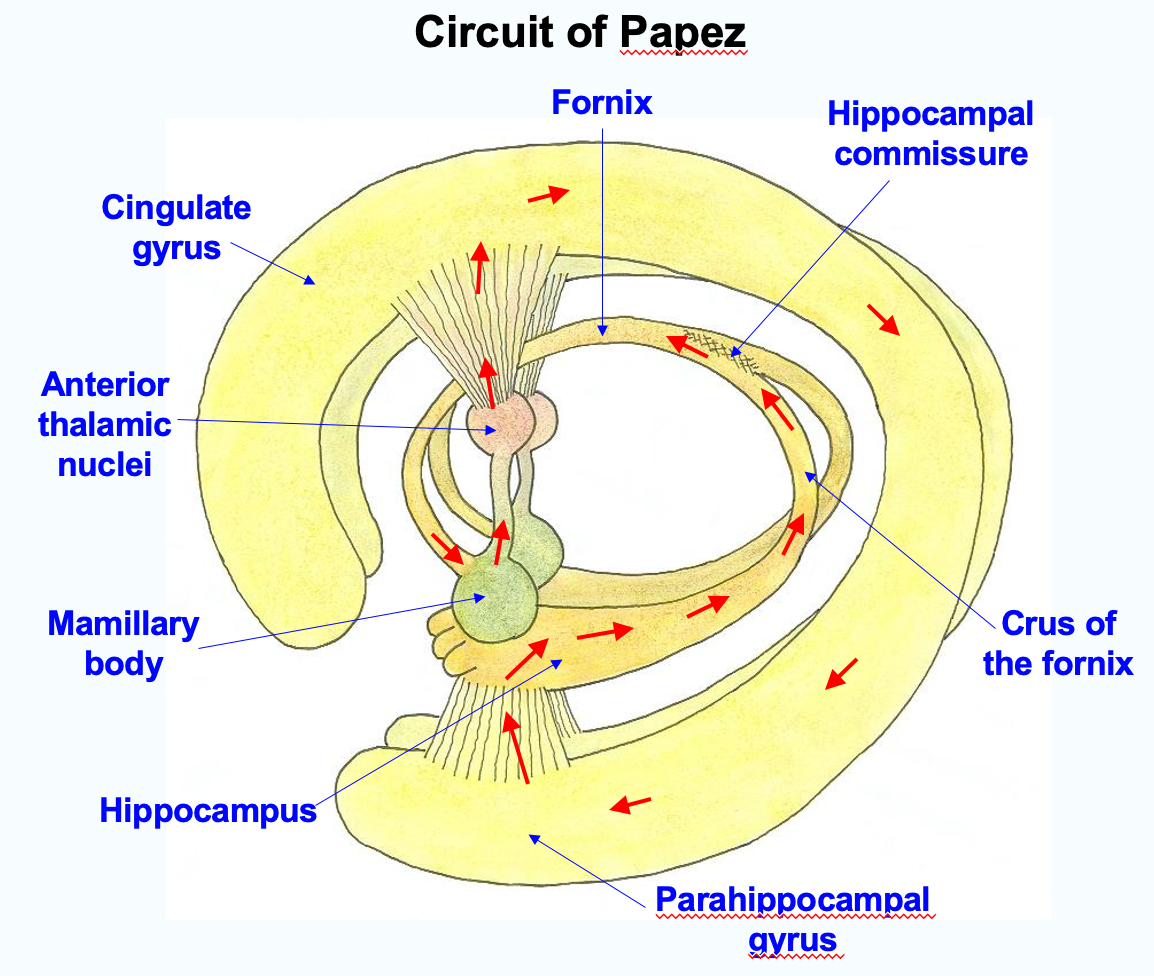
What is the purpose of the Circuit of Papez?
involved in controlling emotion and memory consolidation.
Hippocampal inputs (2)
Sensory information from throughout cortex via entorhinal cortex > perforant path to dentate gyrus
Modulatory inputs from septal nuclei (Ach), brainstem nuclei influence the overall functioning
Hippocampal outputs (2)
Via subiculum and entorhinal cortex to neocortex
Via fornix to (1) septal region (2) mamillary bodies, hypothalamus, medial forebrain bundle
What is the amygdala?
group of nuclei near the tip of the tail of the caudate nucleus, close to the hippocampus in the temporal lobe of the brain
seat of emotional expression
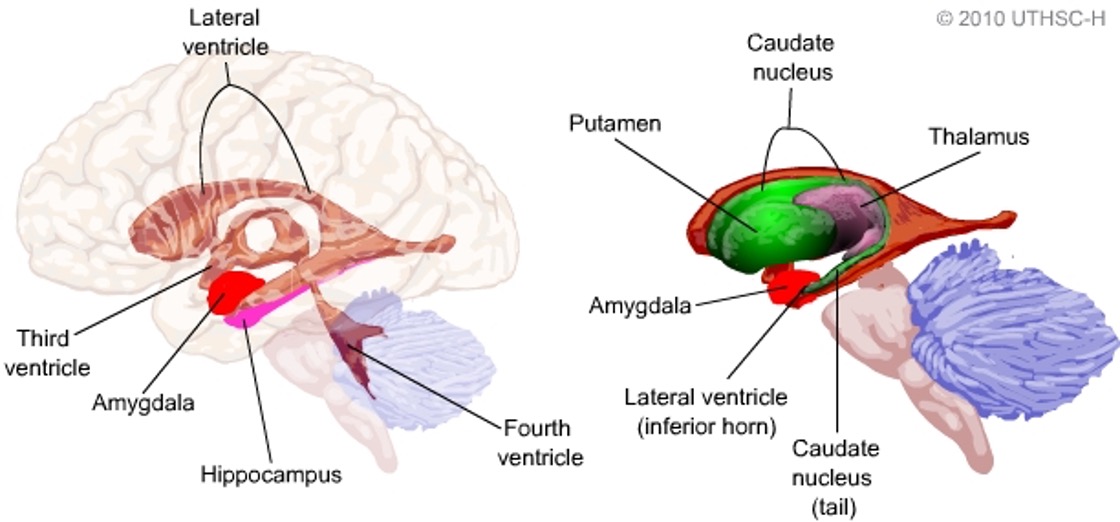
Effects of amygdala when stimulated
may cause rage and aggressive behaviour
Divisions of the amygdala
corticomedial group (olfactory input) and a basolateral group (cortical input)
Major connections of the amygdala
Amygdaloid nucleus receives input from 3 major sources:
olfactory system
sensory association and limbic cortices
hypothalamus
Major outputs via 2 channels:
Stria terminalis (projects to hypothalamus and septal area)
Ventral amygdalofugal pathway (projects to hypothalamus, brainstem and spinal cord)
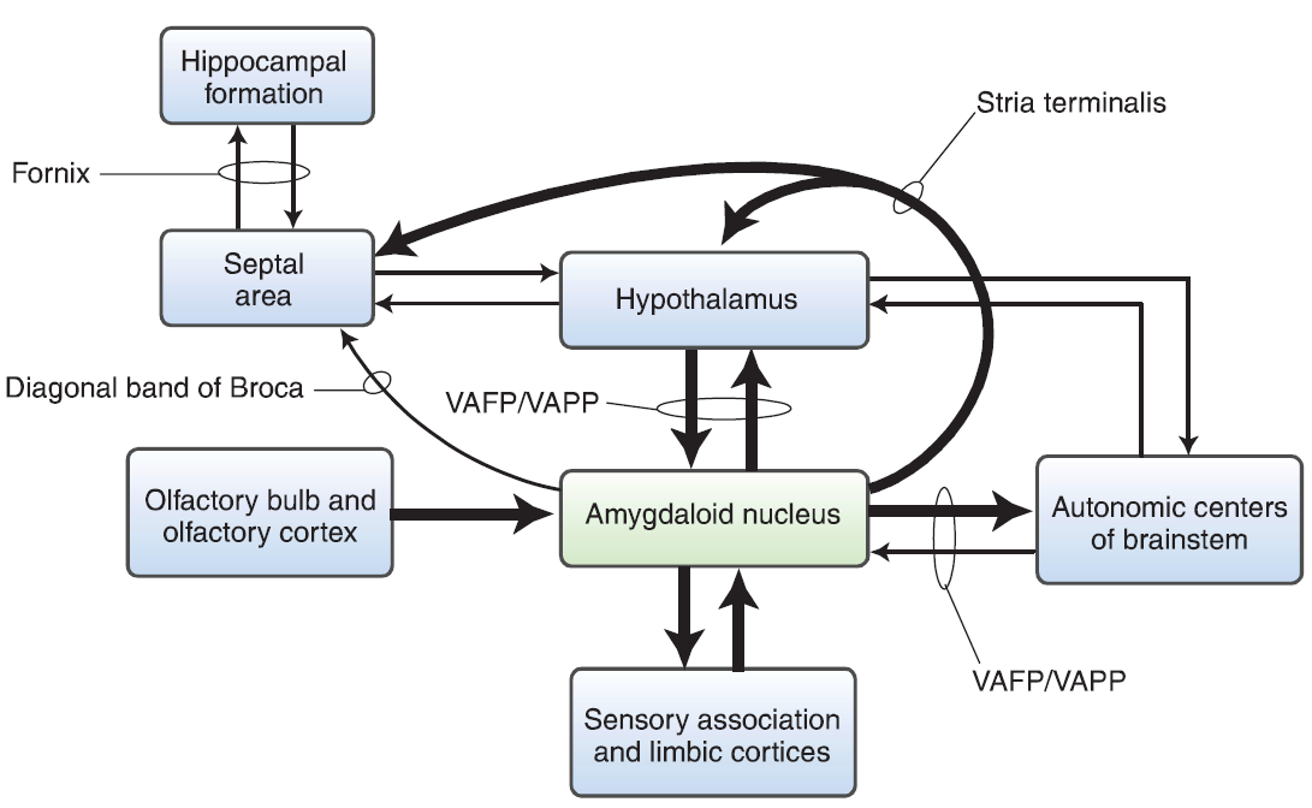
What happens when there is damage to amygdala and/or hippocampus?
Kluver-Bucy syndrome
Kluver-Bucy syndrome symptoms
• Visual agnosia (inability to visually recognise objects)
• Loss of normal fear and anger responses.
• Memory loss
• Distractibility
• Seizures
• Dementia
• Inappropriate sexual behaviour
Brain structures in the rewards circuit
•the striatum (nucleus accumbens)
•prefrontal cortex
•amygdala
•hippocampus
•other limbic system structures
What happens when there’s absence of reward after stimulus predicting a reward?
produces a drop in neural firing
Which system is the most involved in the dopaminergic pathway?
Mesolimbic system - activated when rewarding stimuli is experienced
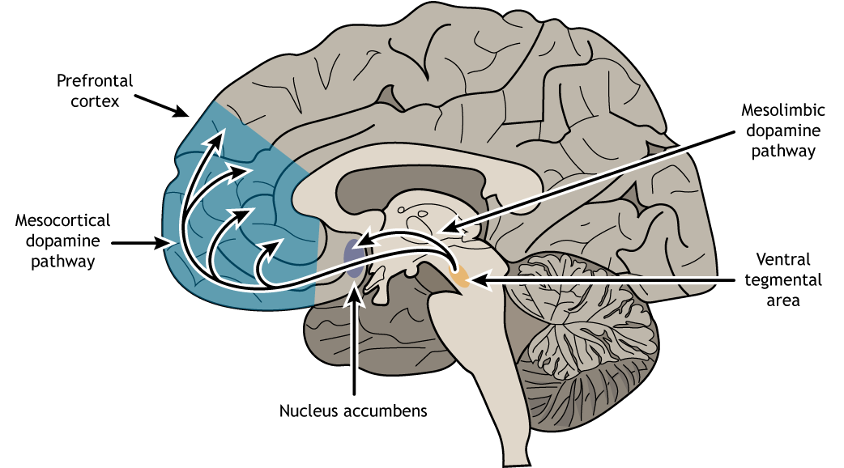
What natural rewards are necessary for survival?
eating, drinking, mating
Food vs drugs activating the reward system
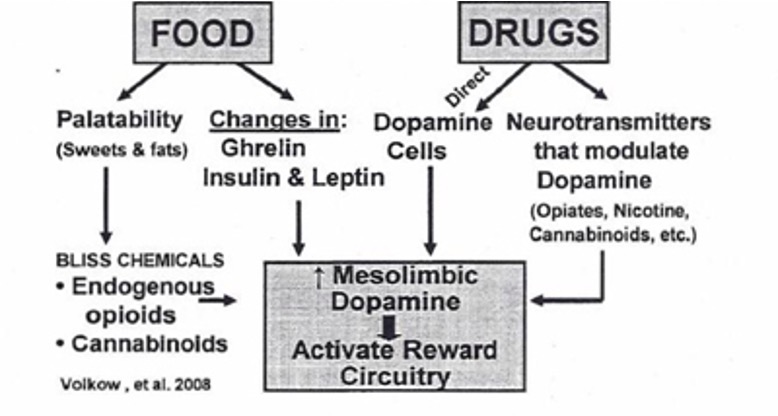
How does the reward circuit work in addiction?
Substances of abuse hijack the mesolimbic system by offering a reward without an obvious biological function
Drugs of addiction acutely boost dopaminergic signalling
How does drug abuse lead to a vicious circle of addiction?
pleasure and reward linked to initial substance use are lost by their abuse
•Causes wanting rather than liking
•A compulsion to take a substances despite consequences and loss of control over intake
Repeated use leads to craving, withdrawal and compulsive use